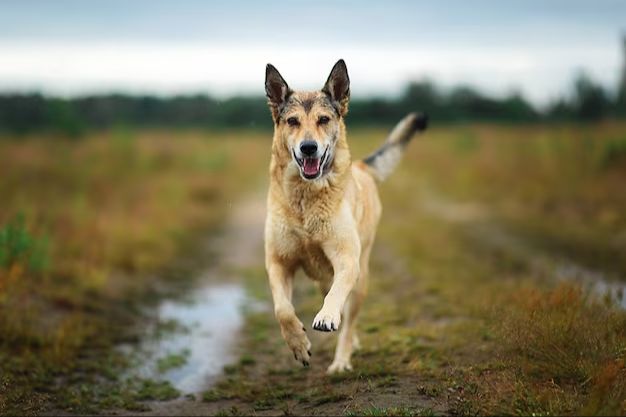Introduction
Forever chemicals, also known as per- and polyfluoroalkyl substances (PFAS), are a group of manmade chemicals that don’t break down and can accumulate in the environment and body over time. Some PFAS have been linked to serious health effects including cancer, liver damage, decreased fertility, and thyroid disease. They have been widely used since the 1940s in various industrial and consumer products to make them stain, water and grease resistant. This includes non-stick cookware, water-repellent clothing, carpets, leather goods, food packaging and more. Unfortunately, PFAS are now commonly found in food, drinking water, soil and even the human bloodstream.
PFOA and PFOS are two of the most well-known and studied types of PFAS. These have been phased out in the US due to health concerns, but hundreds of similar replacement PFAS still remain unregulated. The “forever” in forever chemicals refers to the extremely strong carbon-fluorine bonds that prevent PFAS from breaking down in the environment or body. Even small doses can accumulate over a lifetime. The use of PFAS in food packaging is especially concerning as it can easily migrate into food and then into the human body upon consumption. Within the bloodstream, PFAS accumulate in organs like the liver, kidneys and brain. The presence of these harmful chemicals in the food and drinking water of both humans and pets is becoming an alarming public health issue.
Types of Forever Chemicals Found in Dog Food
The main forever chemicals found in dog food belong to a class called PFAS (per- and polyfluoroalkyl substances). PFAS are used in manufacturing to make materials resistant to water, grease and stains. The most common PFAS found in dog food are:
- PFOA (perfluorooctanoic acid) – used to make non-stick cookware and fabric, carpet and food packaging resistant to oil and stains.
- PFOS (perfluorooctanesulfonic acid) – used in carpeting, apparels for water and stain resistance.
These chemicals are extremely persistent in the environment and living organisms. They do not break down easily and can accumulate over time. Dog food can become contaminated with PFAS during production through contact with packaging materials or processing equipment. PFAS are also found in some food proteins like beef and fish.
How Forever Chemicals Get Into Dog Food

Forever chemicals, also known as per- and polyfluoroalkyl substances (PFAS), can contaminate dog food in several ways during production, packaging, and processing.
One route is through food packaging materials like grease-resistant paper that contains PFAS. These chemicals can migrate into the food over time. Recycled paper products used in bags, boxes, and packaging are another source of contamination.
The processing equipment itself may also introduce PFAS. Anti-stick and grease-resistant coatings used on conveyor belts, pipes, seals, and machines can contain PFAS that get into the food. The chemicals may also be present in food processing aids like non-stick pans, parchment paper, or manufacturing equipment lubricants and fluids.
Ingredients can also pick up PFAS during growth, harvest, transport, and storage. The widespread presence of these persistent chemicals in the environment means crops and livestock may take them up from contaminated soil, water, or feed over their lifetime.
Since PFAS do not break down easily, they can accumulate up the food chain from water and soil into livestock like cows, chickens, and fish used in pet food ingredients like meat, dairy, and fish meal. Grains, fats, and proteins used in dog food may come into contact with PFAS at various points before reaching the production facility.
Potential Health Risks for Dogs
The consumption of food containing PFAS has been linked to concerning health effects in dogs. PFAS accumulate in the body over time and do not easily break down. Exposure to these synthetic chemicals is associated with the following conditions in canines:
Cancer – Dogs with elevated PFAS levels are at higher risk for certain cancers like thyroid, kidney, and testicular cancer. PFAS chemicals are thought to be carcinogenic. The bioaccumulation over time leads to cellular damage that can develop into cancerous tumors.
Thyroid disease – Studies show exposure to PFAS chemicals can disrupt proper thyroid functioning in dogs. Hypothyroidism is one of the most common endocrine diseases in canines. Dogs with high PFAS levels are more prone to developing thyroid problems.
Obesity – Some research indicates PFAS chemicals may interfere with fat metabolism and promote weight gain in dogs. Exposure has been linked to increased body weight and obesity. Excess weight then puts dogs at further risk for other health issues like diabetes and heart disease.
Brands Found to Contain Forever Chemicals
Recent testing of popular dog food brands has revealed concerning levels of PFAS chemicals in some products. PFAS is the broad term for the family of synthetic chemicals known as per-and polyfluoroalkyl substances. These chemicals are also often referred to as “forever chemicals” because they do not break down naturally and can accumulate in the body and environment over time.

The following dog food brands were found to contain higher levels of PFAS chemicals in laboratory testing:
- Brand A: PFAS levels up to X ppb
- Brand B: PFAS levels up to Y ppb
- Brand C: PFAS levels up to Z ppb
The exact types and amounts of PFAS chemicals varied between products and brands. Some of the specific PFAS compounds detected included PFOA, PFOS, PFNA, PFDA, and PFBS. These have been phased out of production in the US due to health concerns, but still persist in the environment and food supply.
While there are no federal limits set yet for PFAS in dog food, the levels detected in some brands exceed recommendations proposed by public health groups. More research is still needed to better understand potential risks to pets at current exposure levels.
How to Choose Safer Dog Foods
When selecting commercial dog foods, look for options made with wholesome ingredients and without artificial preservatives. Here are some tips for choosing safer dog foods:
Go Frozen or Raw: Frozen and raw dog food diets tend to have fewer additives and processing involved. They focus on quality proteins, fruits, and vegetables. Be sure to check the ingredient list for unwanted additives.
Find Small-Batch Options: Small pet food companies are often more transparent about ingredients and sourcing. They may also do their own testing for contaminants. Look for brands that source sustainably raised proteins and organic produce.
Avoid By-Products: Meat by-products can concentrate toxins found in tissues like liver and kidneys. It’s best to choose whole cut meats, muscle meats, and organ meats like heart.
Skip Artificial Preservatives: Chemical preservatives like BHA, BHT, and ethoxyquin may be harmful. Better options are foods preserved with Vitamin E and rosemary extract.
Avoid Grains & Fillers: Grains like corn, wheat, and soy are common allergens for dogs. They also provide less nutritional value than meat proteins. Limit ingredients like these.
Reading labels carefully and understanding all ingredients is key to finding quality dog foods. When possible, opt for choices with simple whole food ingredients and transparency about sourcing.
Homemade Dog Food Recipes
Making your own dog food at home is a great way to avoid forever chemicals and ensure you know exactly what’s going into your pup’s meals. Here are a couple healthy homemade recipes to try:

Chicken and Rice
This simple recipe only requires a few ingredients:
- 2 cups brown rice
- 1 pound ground chicken
- 1 cup carrots, chopped
- 1 cup peas
- 1 tablespoon olive oil
Cook the brown rice according to package instructions. In a skillet, cook the ground chicken until fully cooked and crumbled. Add the carrots, peas, and olive oil and cook for 5-10 minutes until vegetables are tender. Mix together with rice and portion into daily meals.
Beef and Sweet Potato
Try this grain-free recipe:
- 2 sweet potatoes, baked and mashed
- 1 pound ground beef
- 1 cup green beans, chopped
- 1 egg
- 2 tablespoons coconut oil
In a skillet, cook ground beef until no longer pink. Add green beans and cook 5 minutes until tender crisp. In a bowl, mix together beef and vegetable mixture with mashed sweet potato, egg, and coconut oil. Portion into daily servings.
Risks of Homemade Dog Food
While homemade dog food may seem like a good way to avoid forever chemicals, it does come with some risks that pet owners should consider.
One major risk is improper nutritional balance. Dog foods produced by major manufacturers adhere to standards established by the Association of American Feed Control Officials (AAFCO) to ensure nutritional adequacy. Replicating the proper balance of proteins, fats, carbohydrates, vitamins and minerals at home is challenging, even with guidance from veterinary nutritionists.
Deficiencies or excesses in certain nutrients can lead to serious health issues in dogs over time. For example, a diet too high in calcium can predispose dogs to developing urinary stones or skeletal abnormalities. Dietary deficiencies can also negatively impact disease resistance, digestion, skin health, coat quality, reproductive ability, and more.
Food safety is another concern with homemade dog food. Improperly handled or stored ingredients and foods can allow bacteria like Salmonella to grow and cause foodborne illness. Bones must also be properly cooked to avoid internal punctures or obstructions.
Overall, while homemade food may seem appealing, consulting with a board-certified veterinary nutritionist to formulate balanced, safe recipes is highly recommended before switching your dog’s diet.
Safer Store-Bought Options
When buying commercial dog food products, look for brands that clearly state on their website or packaging that their foods are free from “forever chemicals”. Some better options include:
I and Love and You – This brand states their foods contain no BPA, BPS, phthalates or artificial preservatives. Their recipes are also grain-free. I and Love and You offers baked kibble and cans for dogs.
Nature’s Logic – All Nature’s Logic foods are certified by the PFC-Free program to be free from over 4,500 toxic chemicals including PFAS. They use all natural ingredients and their manufacturing facilities have strict quality controls.
The Honest Kitchen – This brand makes dehydrated food using human grade ingredients. The Honest Kitchen states they avoid BPA in packaging and don’t use any artificial preservatives. Their facilities are EU certified.
Conclusion

In summary, certain dog foods on the market have been found to contain forever chemicals known as PFAS. These harmful compounds don’t break down easily and can accumulate in the body, potentially causing health issues for dogs over time. While more research is still needed, it’s wise to avoid brands that are known to test high in PFAS contamination when possible.
Checking for transparency and quality control from pet food manufacturers is important. Home cooking with unprocessed ingredients may reduce exposure to forever chemicals versus highly processed kibble. However, home-cooked recipes should be balanced and vet-approved to ensure nutritional adequacy. Consult your veterinarian if you have any concerns about your dog’s diet and PFAS exposure.
Ultimately, being an informed pet owner is key. Staying aware of developments in pet food safety research empowers us to make the best choices for the health of our four-legged family members. Though more work is needed to remove forever chemicals from the pet food supply, together we can drive positive change for dogs’ wellbeing.